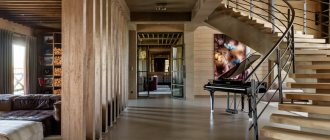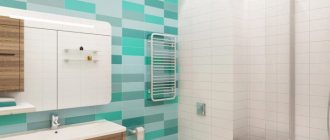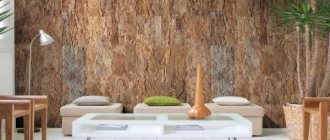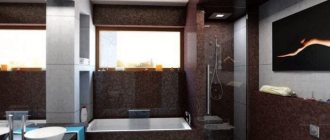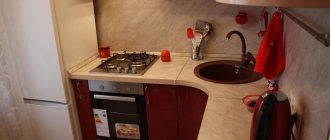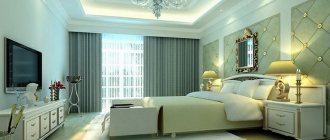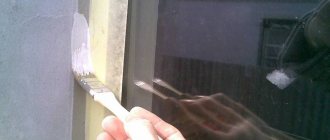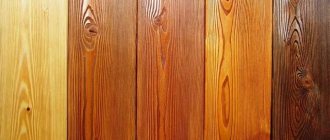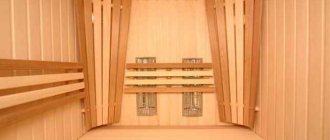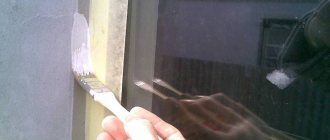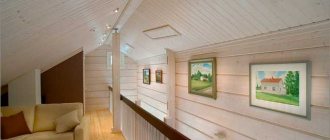The advantages of a bathhouse are difficult to overestimate. This is a great place for rest and relaxation. Bath procedures improve sleep, normalize blood pressure, and remove toxins. Neither Jacuzzis, nor showers, nor other delights of plumbing can compare with the advantages and such widespread popularity of the bathhouse. Today we’ll talk about the features of its internal contents in terms of decoration and design in general.
Types of interior design of baths
The classic layout of a bathhouse includes 3 rooms: a dressing room (dressing room), a washing room (shower room) and a steam room. Although in traditional Russian baths the steam room and shower can be combined. All additional premises - a font (swimming pool), a games room (billiards), a kitchen, a recreation area, a toilet, a smoking room - are a matter of financial capabilities and personal preferences of the owners.
However, the most popular decoration is in the usual Russian style - restrained, laconic, with a massive table, benches and couches. Billiards or TV will add a touch of modernity.
The interior of an old-style bathhouse can be complemented with forged elements, wooden household items and utensils decorated with carvings. Walls decorated with oak, birch brooms or bundles of fragrant herbs will also look colorful.
Methods for laying lining
Before choosing a method for laying lining, the first thing repair professionals advise to start with is to assess the humidity in the room. If finishing is needed in a steam room, then you should focus on horizontal placement of the slats. Vertical installation is suitable for a dressing room or sauna. This is due to the fact that the “vertical” method has a number of disadvantages:
- There will not be sufficient air circulation between the foil and the lining; this will lead to the formation of condensation and the development of mold on the inner surface of the trim and the sheathing beams.
- The finishing below will begin to deteriorate from moisture faster than the upper elements. With a horizontal mounting method, it will be enough to replace the lower strips. If you decide to attach the trim vertically, in the future you will have to trim each plank from below to replace the damaged area.
- When gaps form between adjacent elements, moisture will get inside and not flow down, as happens when installed horizontally.
The vertical method of attaching planks takes less time, so it is more often used by hired craftsmen. Also, the vertical placement of the lining does not make the room visually lower. Most often, to combine practicality and convenience, two installation methods are used simultaneously. In this case, the lower section of the walls is trimmed with horizontal planks so that, if necessary, they can be easily replaced. And the upper half of the wall is sheathed with vertically arranged boards.
Materials for finishing the bath inside
Materials for the interior decoration of a bathhouse must meet a number of conditions:
- resistance to temperature changes, high temperatures, high humidity;
- safety – the materials used must be hypoallergenic, not cause burns upon contact with skin and not release toxins in hot weather;
- strength and durability;
- hygiene - the finishing material should be optimal in care - easy to wash, and not react with household chemicals;
- aesthetics – beautiful interior design that does not irritate the eye – is what you should strive for when decorating the interior of a bathhouse. In this case (especially for Russian baths), wood is ideal. This material meets all the above requirements, is completely environmentally friendly, and, moreover, has an aromatherapy effect. The main thing here is to choose the right type of wood individually for each type of room.
Installation of shelves
The finishing of the steam room is completed with the installation of special furniture - shelves. They are made from the same material as the walls, although there are exceptions. The best materials: linden, aspen, alder, cedar, ash.
It is important to place the shelves correctly to ensure maximum comfort for steamers. The recommendations are as follows.
- If the height of the room allows, it is better to install shelves in 2 or 3 tiers. In this case, you can choose not only a comfortable position, but also the temperature: those who like it hot, steam on the top shelf.
- The distance from the top tier to the ceiling should be at least 120 cm so that it is convenient to climb onto the shelf.
- The distance from the bottom bench to the floor is 25–45 cm.
- The width of the shelf for sitting is 40 cm, for lying - 60 cm, but a width of up to 80 cm is preferable, if the area allows.
- The length of the lying shelf is selected taking into account the height of the tallest family member. Usually it is no less than 180 cm.
Valera
The voice of the construction guru
Ask a Question
Depending on the configuration of the steam room, the relative arrangement of the shelves is chosen. If the sauna is small, it is convenient to dock the sun loungers in the corner. Then their total area will be larger. In a spacious steam room, it is best to install shelves on opposite walls and place the stove between them. In this case, the room is heated more evenly.
Manufacturing and installation
Frame for shelves
First of all, create a drawing of the steam room and examine different options for the arrangement of shelves in the sketch. After choosing the layout, production begins,
- Using the diagram, the volume of materials needed is calculated . For racks and crossbars, take thick bars with a cross-section of 50*50 or 50*80 mm. For the bench itself and the backrest, boards with a thickness of at least 25 mm are needed. The width should be no more than 4 times the thickness, and the length depends on the length of the bench. When making calculations, take into account that the slats are laid with a gap of 1–2 cm.
- Lumber is treated with antiseptics.
- Assembling the frame. They start from the top tier: where the shelf is installed, strapping bars are attached to the wall. Support bars are installed under the harness - at the extreme points and intermediate ones.
- On the contrary, at the width of the shelf, a second row of supports is installed and secured to the wall beam with horizontal jumpers. Then they are tied together with horizontal crossbars, forming an external harness.
- If there is a 3rd tier , repeat the operations: place vertical supports at the required distance and attach 2 tiers to the harness. If necessary, the structure is fastened with diagonal jumpers.
- The flooring boards are placed with a gap of 1–2 cm and secured to the strapping bars with self-tapping screws. The fasteners are recessed so that the metal caps do not burn the skin.
- Install the backrest in the same way : fix it to the wall with self-tapping screws. If a backrest is needed on the lower tier, slats fill the space between the loungers. There should be a larger gap between the bottom rail and the bench - 5-6 cm.
Like the walls in a steam room, the shelves can be painted, varnished with appropriate compounds or treated with oil and wax.
Steam room
For the interior decoration of the steam room, only deciduous wood is suitable. This type of wood does not heat up, does not emit resins, and, importantly, even with light ventilation it dries very quickly, preventing dangerous fungus from developing. We list the most common types:
- linden – visually attracts attention, does not darken over time, has low density and heat capacity: it heats up quickly, but it is impossible to get burned on contact. When heated, it releases a pleasant delicate aroma. Linden finishing is quite popular, so it is quite affordable.
- aspen is a common material for northern regions. The wood is durable, difficult to split or split, and has bactericidal properties;
- alder – has a beautiful appearance, is pleasant to the touch, resistant to cold and hot water, condensation and steam, alkaline and acidic detergents, and is easy to process.
- Abash is a tree from the tropics of Africa. Even in the hottest heat, it hardly heats up and maintains a temperature close to the human body temperature. Even under the influence of external factors (water, temperatures and steam) it does not darken at all.
Important! Wood cannot be coated with varnish or paint, even of the best quality. When heated, they release an unpleasant chemical odor. During the installation process, nails (screws) must be covered at the top and set deeply, otherwise they may burn when heated. It is better to mount the lining vertically, as drops formed by condensation will drain faster. The junction of the floor and walls must be protected with high skirting boards made of a waterproof material.
Typically, the steam room has wooden floors made of hardwood. But still, tile will be preferable. It washes well, dries quickly and is resistant to fungus. If this coating seems cold to you, you can put a removable wooden grate on top.
The furniture in the steam room is predominantly round in shape and made of aspen, alder or linden wood.
Steam room design
If we are talking about finishing options for finishing a steam room in a bathhouse , then it would be worthwhile to somehow classify them and talk about them from different points of view. That is, we can talk separately about floors, walls, ceilings, doors and windows, or we can talk about materials. This is what we will try to cover below.
Floor
In a paired room, the floor comes in three versions:
- tree;
- tile;
- concrete.
The latter option is not intended at all for walking on it with bare feet, but people also walk on this floor in rubber slippers or on ladders. We mention it here only for the sake of completeness. Although, if you paint it with something waterproof ... In general, be that as it may, there are three working options for installing floors in the steam room. A wooden floor can be wet or dry; you can read about the features of both options here.
We will not touch on how to make this or that floor, we are only interested in what it is and what it looks like in the end.
A poured wood floor consists of boards secured to joists without joints. The gap between adjacent boards is up to 1 cm.
Dry floor , on the contrary, consists of very tightly joined boards, most often tongue and groove.
Both floors, after completion of installation work, can be painted either with acrylic varnish or with impregnation for sauna floors . This will make the floorboards water-repellent and the floor itself more durable.
Tiles are also fully present in the steam room, because no one wants to change the floors every 5-7 years, as is the case with the pour-over option, and a dry floor can also deteriorate - it is, after all, wood, and it is not particularly friendly with water ( except for species such as larch).
IMPORTANT! The main argument against tile floors is that they are a slip hazard.
But there are enough tiles on sale that have a rough surface that prevents slipping. Concrete... If the screed is made of high-quality concrete, then water will not harm it for a very long time. But it will also look as if the finishing of the steam room in the bathhouse was left halfway. To give it some finality, we would advise painting it with paint for concrete pools - everything will somehow be prettier.
paint for concrete pools Hydrostone
How to decorate the walls and ceiling
It’s not for nothing that we have combined walls and ceilings into one category - they are usually made of the same material.
If regarding the floors there was still some variability in the choice of material for finishing them in the steam room, then for the walls and ceiling in a standard bath there was only one material - wood. And it is right. Firstly, tradition, secondly, useful, thirdly, pleasant and beautiful.
But in general, the design of a steam room in a bathhouse, if we talk about the walls and ceiling, comes down to the choice of lining. True, some leave the walls made of timber or logs unsealed, but this is only if the timber or logs are thick enough or the winters are moderately frosty, which is why it is not cold in the steam room.
But there are quite a lot of types of lining so that those who do not want the standard option have plenty to choose from.
ATTENTION! To begin with, let us clarify that imitation timber and blockhouse (imitation log house) are also types of lining. After all, this word essentially means just a profiled board, and it can have many different profiles.
euro and non-euro
First of all, the design of the tongue-and-groove connection varies. Based on the differences between them, such types of linings as standard (according to Soviet GOST), eurolining, and “American” are built.
Secondly, they may differ in the profile of the front side of the bar . The presence and absence of chamfers, the degree of rounding, various protrusions and depressions create all the variety of surfaces finished with these boards.
It is also worth taking into account the presence or absence of ventilation grooves on the back of the lamella . They were not included in the Soviet standard, but they are needed, and the eurolining has them.
ADVICE! For those who want to creatively approach the interior decoration of a steam room in a bathhouse, we can recommend combining several different profiles, for example, smooth with or without a chamfer and some of the carved profiles.
You can read more fully about the types of lining and cladding methods in this article.
Of course, there is also finishing around the stove in the steam room of the bathhouse, and it is made, in particular, from tiles - ceramic or natural stone. But we will talk about this in a separate chapter below.
Doors and windows
For doors and windows, the most important thing concerns not so much the design as the correct choice of wood.
After all, you can’t put a plastic door in a steam room, except perhaps a glass one, which is made for a sauna, of course (that is, with a healthy gap under the door, necessary for ventilation of the sauna). But if you file the frame, you can install a glass door in a Russian bathhouse. And you won't have problems closing the doors.
But if the door is made of wood, then increased humidity will affect it primarily by changing the volume of wood , that is, it will change the dimensions of the doors. And they will periodically not fit into the opening.
To avoid such problems, you need to choose a tree that is least deformed by moisture. And it is very affordable - it is an ordinary linden tree. By the way, it is worth making not only doors, but also shelves from it, and some people will prefer linden lining. The properties of wood will be discussed below.
BY THE WAY! There are different doors, we advise you to take a panel door made of solid linden, but framed and paneled doors will be out of place in a steam room.
As for the windows, if there are any, they are small. wooden frames for them if you can successfully combine a double-glazed window with several chambers and a frame made of the desired wood. Usually they take what the manufacturer has.
IMPORTANT! We will not recommend plastic for the steam room - PVC, after all, does not like temperature changes, it warps from them, and its composition is variable, that is, it can release anything that is in it. Yes, and it burns well, if without special additives.
As for the coating for doors and windows... The only safe compositions are acrylic varnish and impregnation for walls . (By the way, it was not mentioned above, but these are the coatings that can be used for walls and ceilings.)
Waiting room
The room is not hot, but retains heat. Therefore, coniferous species will be an excellent material for finishing here. Their noble aroma is not only pleasant, but also incredibly useful. Phytoncides have a beneficial effect on the immune system, stimulate the body's resistance to various infections and improve overall well-being. Let's look at the main types:
- Pine is a very popular material for dressing a dressing room, because it has a number of advantages: economical, durable, environmentally friendly and quite durable. May change color slightly over time, acquiring a reddish tint. Scandinavian pine with smooth pinkish wood is becoming increasingly popular. Its annual rings have an original decorative pattern;
- spruce – has a uniform structure, does not crack when drying, and is slightly lighter in color than pine wood;
- fir - the main characteristics are almost the same as spruce, while almost no resin is released from its wood.
Birch is a good option for a deciduous tree for a dressing room. In any case, when decorating, the main thing is to follow the basic rule - the entire room should be paneled with the same type of wood.
Construction of sheathing
In a steam room, the arrangement of lathing is not at all necessary, but its presence makes it easier to attach the main material. The most optimal option is a lathing with dimensions of 50*50 cm.
The material for the construction of support posts, as a rule, is wooden slats, or less often a metal profile. All wooden parts must be pre-impregnated with moisture-resistant oil. Metal surfaces are coated with an anti-corrosion compound.
Finishing a bathhouse inside: basic rules
A bathhouse is, first of all, a place to relax. It is better to exclude bright colors and expressive shapes here. The main principle is to create an ideal environment for a cozy and relaxing pastime, without unnecessary details.
Lighting should be soft, with warm shades, conducive to a pleasant and relaxing holiday. This effect can be achieved by using a two-tier lampshade that diffuses light. All electrical wiring parts must be reliably protected from moisture.A modern interior for a bathhouse is a manifestation of the designer’s imagination and taste. Tell us about your favorite places to rest and relax. Were there any of them that impressed you the most with their exquisite interior?
What you should pay attention to
When choosing a material, when you have to decorate a sauna with your own hands, you should be guided by some rules:
- Commercial timber must have a nominal moisture content established by the regulatory framework.
- Finished joinery products, in the form of lining, tongue-and-groove boards, block houses, must be protected either with packaging films or special storage conditions in closed dry warehouses.
- Reject products with through knots, cracks, or breaks. You need to be especially meticulous in inspecting the elements for signs of warping or twisting. Products of the same batch must be calibrated in terms of geometric dimensions, lock shape and main color of the product.
- The presence of signs of changes in natural color, darkening or graying of the ends, or whitening of the surface indicates problems with pathogenic microflora and control measures taken.
- Signs of damage by grinding insects indicate a dramatic decrease in the strength of the elements and the possibility of infection of healthy wood in case of contact.
Lathing
It is preferable to fasten the lining onto the sheathing.
- Cell sizes are often 50x50 or 70x70cm.
- The base can be made with other parameters, it all depends on the material and circumstances.
- The material for the sheathing is also wood.
- Fastening elements - screws or nails.
- Fastening parts must be made of copper or brass.
Ceiling protection
Before covering the wall, you need to protect the ceiling from steam. This can be done using aluminum foil or a building membrane.
You don’t even have to think about polypropylene foam or mineral wool in foil. Such materials become very toxic when heated.
